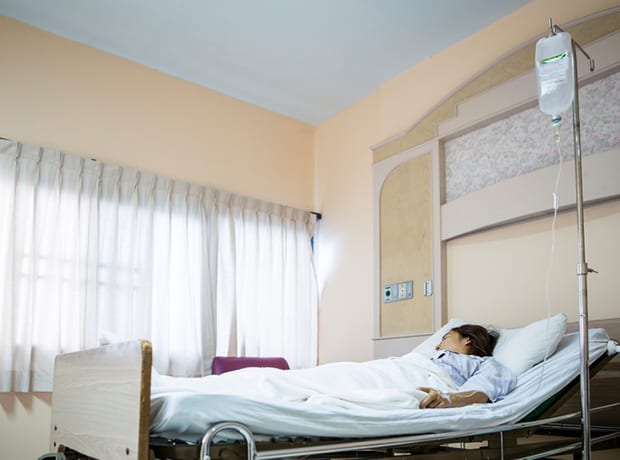The number of overnight hospital beds available to patients in England has decreased by a fifth in a decade, according to research by the British Medical Association.
The report highlights that across the UK the number of hospital beds per head has fallen at a time when demand on NHS services has increased.
According to the data, in 2000 there were an average of 3.8 beds per 1,000 people, but this had dropped to 2.4 beds by 2015.
In the first week of January this year, almost three-quarters of trusts had an occupancy rate of 95 percent on at least one day of that week, well above the recommended limit of 85 percent.
The findings echo those of a BBC News investigation which revealed that 66 hospital trusts had an average occupancy rate above 95 percent from the start of December 2016 to 22 January this year, figures which Chris Hopson, chief executive of NHS Providers, described as “worrying”.
“There is strong evidence that bed occupancy rates above 85 percent can compromise patient safety, increasing the risk of infection. They also mean that hospitals have less capacity to respond to unexpected demands such flu outbreaks. Working in this way is inefficient,” he noted.
Unsustainable pressures
“High bed occupancy rates have become routine in the NHS. But that does not mean they are acceptable. They are an important indicator of unsustainable pressures on the whole health service, which have reached unprecedented levels in recent weeks.”
The BMA’s report also underscores the current mismatch between the supply and demand for beds, which it says is causing bottlenecks in emergency departments. In November 2016, 15 percent of patients – almost one in seven – spent more than four hours waiting for a hospital bed, it noted.
Further highlighting the point, the data show that between September 2010 and September 2016 there has been a 12 percent increase in hospital admissions, but a 41 percent increase in the number of delayed bed days.
Elsewhere in the system, the current pressures on mental health services are particularly acute, the union warns, driven by a 44 percent decrease in the number of mental health beds since 2000/01. Between March and October 2016, an average of 726 mental health patients had been given out of area placements each month, it said.
“The UK already has the second lowest number of hospital beds per head in Europe per head and these figures paint an even bleaker picture of an NHS that is at breaking point,” warned Dr Mark Porter, BMA council chair. “High bed occupancy is a symptom of wider pressure and demand on an overstretched and underfunded system.”
“In the short term, we need to see bed plans that are workable and focused on the quality of care and patient experiences, rather than financial targets. But in the long term we need politicians to take their heads of out the sand and provide a sustainable solution to the funding and capacity challenges that are overwhelming the health service.”
Shadow health secretary Jonathan Ashworth told the media: “Almost all hospitals have been running over the safe 85 percent mark for bed occupancy while 60 hospital trusts are over 95 percent this winter. The response from ministers is to blame others and bury their heads in the sand.
‘Mismanagement’
“This government’s mismanagement is failing our NHS and failing patients. The prime minister must wake up to this crisis and ensure that the NHS and social care have the funding and support needed in the budget next month.”
However, the Department of Health has dismissed the figures as “inaccurate”.
“The figures come from two different time periods when the way of counting beds was different, and so they aren’t comparable,” a spokesperson said.
“Our hospitals are busier than ever but thanks to the hard work of staff, our performances are still amongst the best in the world. We have backed the NHS’ own plan for the future with an extra £10 billion by 2020.”










